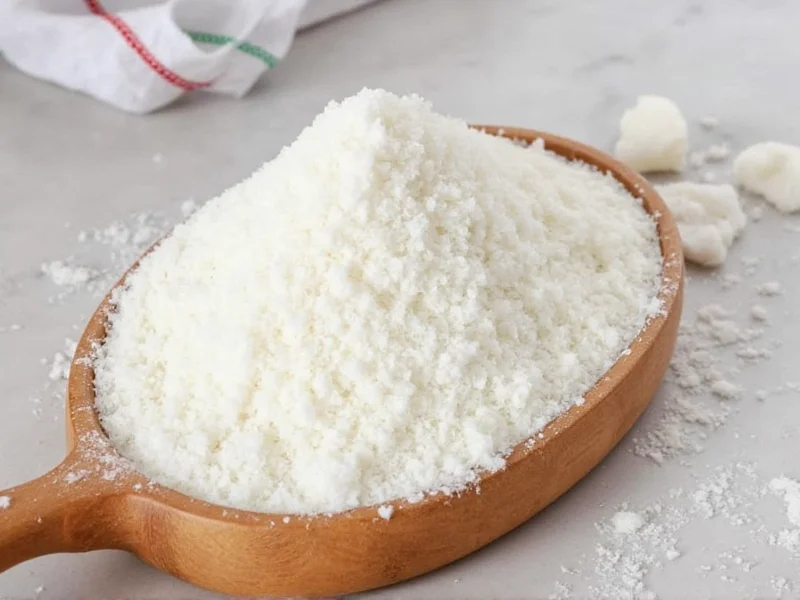Arrowroot starch, derived from the rhizomes of tropical plants in the Marantaceae family, has been valued for centuries as a versatile culinary ingredient. This fine, white powder offers unique properties that make it superior to other thickeners in specific applications. Understanding its proper usage can transform your cooking results, particularly when working with delicate flavors and textures that other starches might compromise.
What Makes Arrowroot Starch Unique
Unlike cornstarch or wheat flour, arrowroot starch contains no gluten and maintains a neutral flavor profile. Its fine particles create a crystal-clear gel when cooked, making it perfect for fruit sauces and transparent glazes where cloudiness would be undesirable. The starch activates at lower temperatures (around 140°F/60°C) compared to cornstarch (which requires near-boiling temperatures), preventing overcooking of delicate ingredients. Additionally, arrowroot maintains its thickening power when combined with acidic ingredients like lemon juice or vinegar—something that causes cornstarch to break down.
Top Culinary Applications of Arrowroot Starch
Perfecting Sauces and Gravies
When preparing arrowroot starch uses for sauces, create a slurry by mixing one part starch with two parts cold liquid before adding to hot mixtures. This prevents clumping and ensures smooth integration. Arrowroot's ability to thicken at lower temperatures makes it ideal for delicate cream sauces, fruit coulis, and acidic tomato-based sauces that would break with cornstarch. The resulting texture is silky rather than gummy, with a glossy appearance that enhances visual appeal.
Exceptional Pie Fillings and Fruit Desserts
Arrowroot starch uses in pie fillings produce superior results compared to other thickeners. It sets firmly when cooled yet remains tender when sliced, without becoming rubbery or opaque. For fruit pies, use 1-2 tablespoons of arrowroot per cup of fruit juice, depending on desired thickness. Unlike cornstarch, arrowroot doesn't require prolonged boiling, preserving fresh fruit flavors and vibrant colors in berry pies and fruit tarts.
Gluten-Free Baking Applications
As a gluten-free arrowroot starch application, it improves texture in cakes, cookies, and breads. When combined with other gluten-free flours (typically comprising 10-15% of the dry ingredients), it creates a more tender crumb and prevents dryness. Arrowroot starch also helps bind ingredients in vegan recipes, serving as an effective egg substitute when mixed with water (one tablespoon starch plus two tablespoons water replaces one egg).
Dairy-Based Desserts and Custards
Arrowroot starch for custards and puddings creates a smooth, velvety texture without the eggy flavor that sometimes occurs with cornstarch. It's particularly valuable for dairy-free custards using coconut or almond milk, as it doesn't break down when combined with these alternative milks. The starch maintains its thickening power through multiple reheating cycles, making it ideal for dessert fillings that require preparation in advance.
| Thickener | Best For | Activation Temp | Acid Tolerance | Freeze/Thaw Stability |
|---|---|---|---|---|
| Arrowroot Starch | Fruit sauces, dairy desserts, acidic recipes | 140°F (60°C) | Excellent | Poor |
| Cornstarch | Cream pies, gravies, non-acidic sauces | 203°F (95°C) | Poor | Good |
| Tapioca Starch | Fruit pies, frozen desserts | 185°F (85°C) | Good | Excellent |
| Wheat Flour | Gravies, roux-based sauces | 185°F (85°C) | Good | Good |
Proper Usage Techniques and Ratios
Mastering how to use arrowroot starch in recipes requires attention to technique. Always create a slurry with cold liquid before adding to hot mixtures—adding dry starch directly causes clumping. The ideal ratio is 1 tablespoon arrowroot starch per 1 cup of liquid for a light thickening, or 2 tablespoons for a firmer set. Never boil arrowroot-thickened mixtures vigorously, as prolonged high heat causes the gel to break down. Add arrowroot near the end of cooking, removing from heat just before the mixture reaches desired thickness, as it continues to thicken while cooling.
Storage and Shelf Life Considerations
Store arrowroot starch in an airtight container in a cool, dark place. Properly stored, it maintains potency for 12-18 months. Unlike cornstarch, arrowroot doesn't absorb moisture as readily, but humidity can still compromise its effectiveness. Check for freshness by mixing a small amount with cold water; fresh starch will disperse smoothly without clumping. Discard if you detect any musty odor or discoloration.
Common Mistakes to Avoid
Many home cooks encounter issues with arrowroot starch uses due to improper technique. Never add arrowroot to boiling liquids—it must be incorporated at lower temperatures. Avoid using it in recipes requiring freezing, as the texture breaks down upon thawing. Don't substitute arrowroot for cornstarch in equal amounts without adjusting ratios, as their thickening powers differ. Finally, never use aluminum cookware with arrowroot, as it can cause discoloration; stick to stainless steel, glass, or ceramic.
Special Considerations for Dietary Needs
Arrowroot starch applications shine in specialized diets. It's naturally gluten-free, making it essential for celiac-safe cooking. Unlike cornstarch, it's typically not derived from genetically modified crops, appealing to those avoiding GMOs. The starch is easily digestible, benefiting those with sensitive digestive systems. However, arrowroot lacks significant nutritional value beyond carbohydrates, so it shouldn't be considered a health food—its value lies in its functional properties rather than nutritional content.
When Not to Use Arrowroot Starch
Despite its versatility, arrowroot starch isn't ideal for every application. Avoid using it in dairy sauces that require prolonged cooking, as it can develop an unpleasant flavor with extended heat exposure. It's unsuitable for recipes requiring freezing, as the gel structure collapses upon thawing. Don't use it in high-fat sauces, where it may separate. For gravies with long simmering times, consider using a combination of arrowroot at the end of cooking with another thickener for stability throughout the cooking process.
Practical Substitution Guidelines
Understanding arrowroot powder substitution ratios prevents recipe failures. Replace cornstarch with 25% less arrowroot (e.g., 3/4 tablespoon arrowroot for 1 tablespoon cornstarch). When substituting for flour, use half as much arrowroot (1 tablespoon arrowroot replaces 2 tablespoons flour). For tapioca starch, use equal amounts, though arrowroot produces a clearer finish. Always adjust liquid content slightly when substituting, as different starches absorb varying amounts of moisture.











 浙公网安备
33010002000092号
浙公网安备
33010002000092号 浙B2-20120091-4
浙B2-20120091-4